


May 26, 2019
GODWIN SADOH
–––––––––––––––––––––––––––
Thomas Ekundayo Phillips: Composer of Nigeria's First Church Cantata
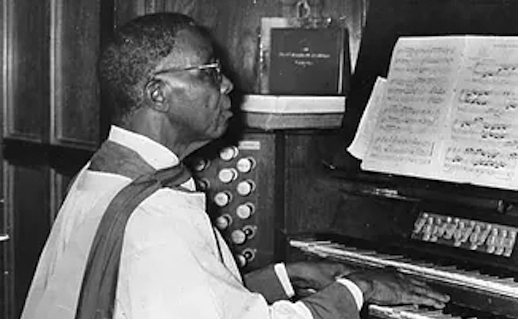
May 26, 2019
GODWIN SADOH
–––––––––––––––––––––––––––
Thomas Ekundayo Phillips: Composer of Nigeria's First Church Cantata

Thomas Ekundayo Phillips playing the dedication recital on the 1932 Abbott & Smith organ at Cathedral Church of Christ in Lagos, Nigeria.
Thomas Ekundayo Phillips playing the dedication recital on the 1932 Abbott & Smith organ at Cathedral Church of Christ in Lagos, Nigeria.
Western choral music was introduced to Nigeria through churches established by early missionaries from the United States and Great Britain in the mid-nineteenth century. It was in these churches that the first converts to Christianity were exposed to simple English hymns in four-part harmony, and later to advanced large choral works such as Handel's Messiah and Mendelssohn's Elijah. In addition, talented Nigerian musicians received lessons in piano and organ playing, Western music theory, and singing in mission schools and churches. By the turn of the twentieth century, Nigerian composers had begun composing original choral songs and arrangements of folksongs and traditional songs, the first of which were set to paper around 1910. The experimental creative exercises of hybridizing indigenous Nigerian musical elements with Western classical music actually began in the church. This essay is written to mark the Golden Jubilee (1969–2019) of the death of Thomas Ekundayo Phillips, the most influential Nigerian composer from the first epoch, fondly referred to as the father of Nigerian church music for his invaluable contributions to sacred music.
Life
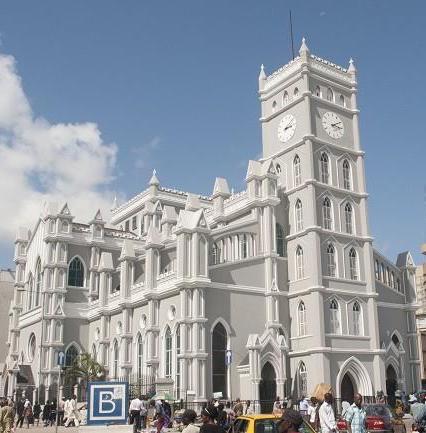
Thomas Ekundayo Phillips was born on March 8, 1884. In 1911, he studied organ and violin in London at Trinity College of Music and graduated in 1914. Upon returning to Nigeria later that year, he was appointed to the lofty position of Organist and Master of the Music at the renowned Cathedral Church of Christ, Marina, Lagos at the young age of 30, where he remained for 48 years. To help to earn enough money to support his family, Ekundayo Phillips was also a chemist and an optician. Phillips belongs to the first generation of Nigerian composers, which was comprised mainly of church organists and choirmasters at the turn of the twentieth century. In Nigeria, this period is also known as the "Golden Age of Church Music" (1900–1950), in which composers wrote music exclusively for the church. Phillips's compositions include several introits, Venite, Te Deum, Magnificat and Nunc Dimittis, Benedictus, Versicles and Responses in Yoruba, Anglican chants, hymns, descants, choral anthems, and a cantata.

Phillips's compositions combine traditional creative principles inherent in Nigerian roots with modern techniques, resulting in truly intercultural music. His works include tetratonic, pentatonic, and hexatonic scales, emphasis on textual-musical relationship, call-and-response technique, monophonic texture and indigenous polyphonic combinations of parallel intervals. In addition to composition, Ekundayo Phillips was also a pioneering ethnomusicologist, who did extensive research on Yoruba traditional music, in particular its creative resources and stylistic principles. This scholarly work was published as the first ethnomusicological book by an indigenous African musician, titled Yoruba Music: Fusion of Speech and Music.
Some of the most internationally-reputable Nigerian musicians received their primary tutelage under Ekundayo Phillips in the Choir of the Cathedral Church of Christ. They include Fela Sowande (1905–1987), Christopher Oyesiku (b. 1925), Samuel Akpabot (1932–2000), Ayo Bankole (1935–1976), and Lazarus Ekwueme (b. 1936). In 1964, the University of Nigeria-Nsukka awarded an honorary Doctor of Music degree to Ekundayo Phillips for his outstanding contributions to the development of church music in Nigeria. The award was conferred on him by the first civilian President of Nigeria, Nnamdi Azikiwe (1904–1996), who was also a Visitor to the university at the time. Phillips was also decorated with the award of Member of the British Empire by Queen Elizabeth II during the coronation ceremony of the Duke of Edinburg. Ekundayo Phillips departed this world at the ripe age of 85 on July 10, 1969 at his residence in Idi-Oro, Lagos.
Thomas Ekundayo Phillips wrote several songs of worship in English and Yoruba for the Cathedral Church of Christ, and other smaller parish congregations in Lagos. Although services were conducted mainly in English at the Cathedral Church, Phillips's compositions in Yoruba were permitted during special occasions such as Mass Choir concerts, Synod services, diocesan events, evening services, and the ordination of a Bishop or Archbishop. Such events attracted people from all educational backgrounds. As the church was nestled in a Yoruba state, the majority of the guests from other parishes were Yoruba, therefore, they felt more at home singing songs in their own language. Phillips's music represents the product of the first generation of Nigerian composers. Broadly speaking, Phillips's compositions can be compartmentalized into three main sections: liturgical music, hymns, and choral works.
The Cantata
In 1944, Ekundayo Phillips became the first indigenous Nigerian composer to write a cantata entitled, Samuel: Judge, Priest and Prophet, for soloists, chorus, and organ. This major work includes many of the stylistic elements mentioned earlier. The world premiere of this major choral work was performed by the Cathedral Choir and the Cathedral itself was packed dignitaries, eminent European and African personalities, members of the Cathedral church and people from other churches throughout the region.
The Cantata was specifically composed for the Cathedral Church of Christ Choir, and the organ at the time was built in 1932 by Abbott & Smith (now no longer extant) of Leeds, and was mounted in the choir section of the Cathedral. It was later enlarged in 1954 by William Hill & Son of London, but the specification of the organ at the time of the cantata's premiere (which was drawn up by Ekundayo Phillips in consultation with the builders) contained the following stops:
Great Organ
Double Open Diapason 16'
Large Open Diapason 8'
Small Open Diapason 8'
Dolce 8'
Clarabel Flute 8'
Principal 4'
Fifteenth 2'
Swell Organ
Violin Diapason 8'
Lieblich Gedackt 8'
Echo Gamba 8'
Vox Celeste 8'
Gemshorn 4'
Harmonic Flute 4'
Horn 8'
Oboe 8'
Choir Organ
Duciana 8'
Rohrflute 8'
Viol D’orchestre 8'
Lieblich Flute 4'
Clarinet 8'
Pedal
Harmonic Bass 32'
Open Diapason (metal) 16'
Bourdon (wood) 16'
Bass Flute 8'
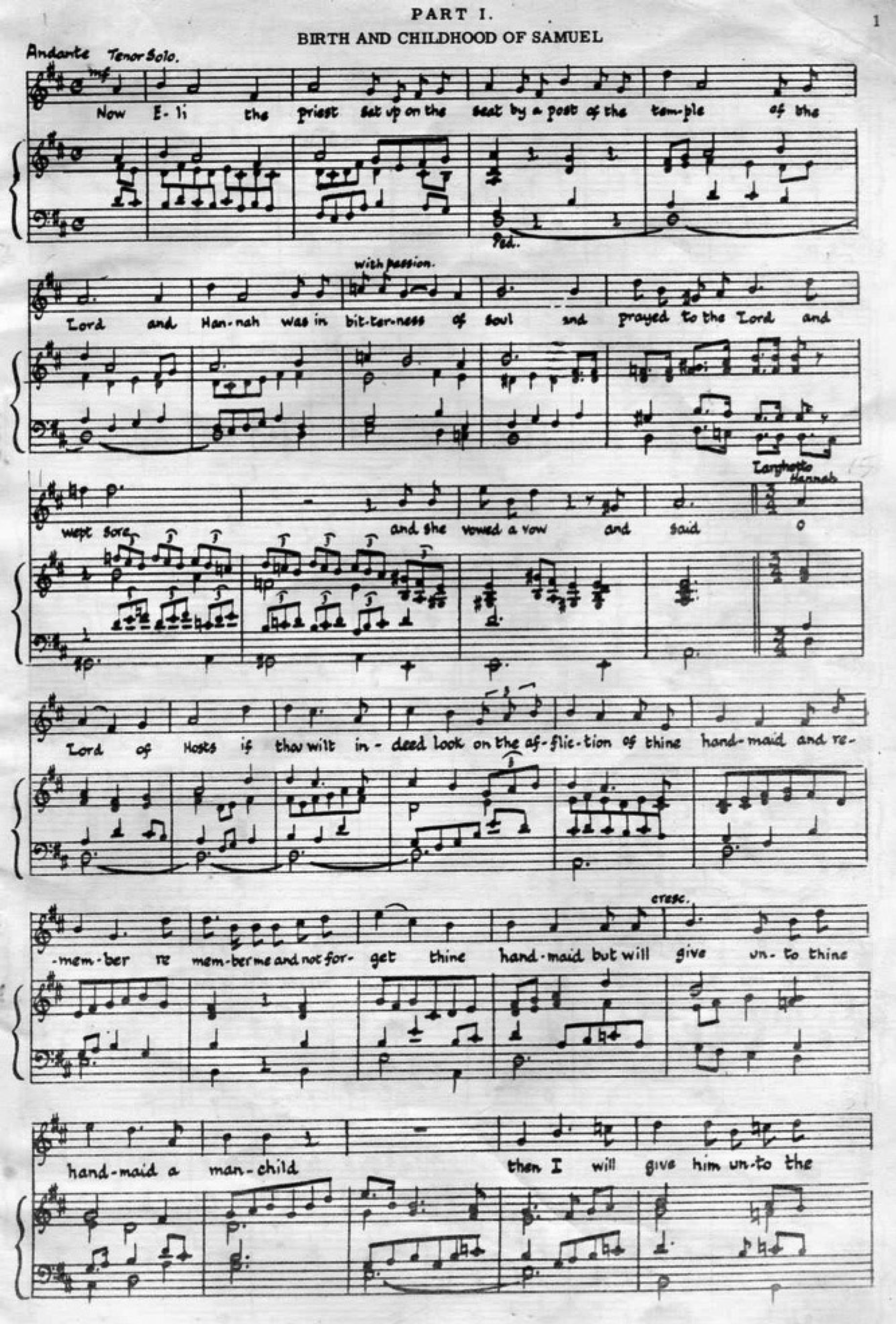
The text of the cantata is taken from I Samuel: 1–12, divided into three parts: a musical narration of the birth and childhood of Samuel, the ministry of Samuel as the Prophet of God in the land of Israel, and an account of how Samuel crowns Saul as the first King of Israel.
Part 1 opens with a tenor solo in the key of D major, narrating the ordeal of Hannah's inability to bear a child, and how she wept before the Lord. Hannah comes in to pray and vowed to the Lord, that if she be blessed with a son, she will give him back to the Lord (see Example 1).

This is followed by a tenor solo, Eli the prophet, praying over Hannah that the Lord will grant her the request. At this point, the music modulates to G major. Continuing in G as a recitative, the narrator (tenor) declares the prayer of Hannah answered by the Lord. She had a son and gave him back to the Lord at Shiloh. The chorus is first introduced with a contrapuntal prayer in F major, singing the prayer of Hannah as she presents her son to the Lord, “My heart rejoiced in the Lord, my horn is exalted in the Lord.” This is followed by a short organ interlude, after which the chorus continues Hannah's song, "My mouth is enlarged over mine enemies, because I rejoice in thy salvation." Here, Phillips uses short chromatic units to color this section both in the voices and accompaniment.
Hannah's song of praise then continues with a soprano solo, "There is none holy as the Lord." The latter part of Hanna's song is scored for SATB chorus without accompaniment, "He will keep the feet of His saint..." The organ joins to support the voices, and transitions and eventually closes in G major. The first part of this cantata ends with three solos: the bass narrates how Samuel ministered to the Lord and how he first heard the voice of the Lord (see Example 2); Samuel's response to the voice of the Lord (tenor); and the voice of the Lord, bass, foretelling what was about to happen in Israel. Phillips ends part one of this cantata with a hymn.
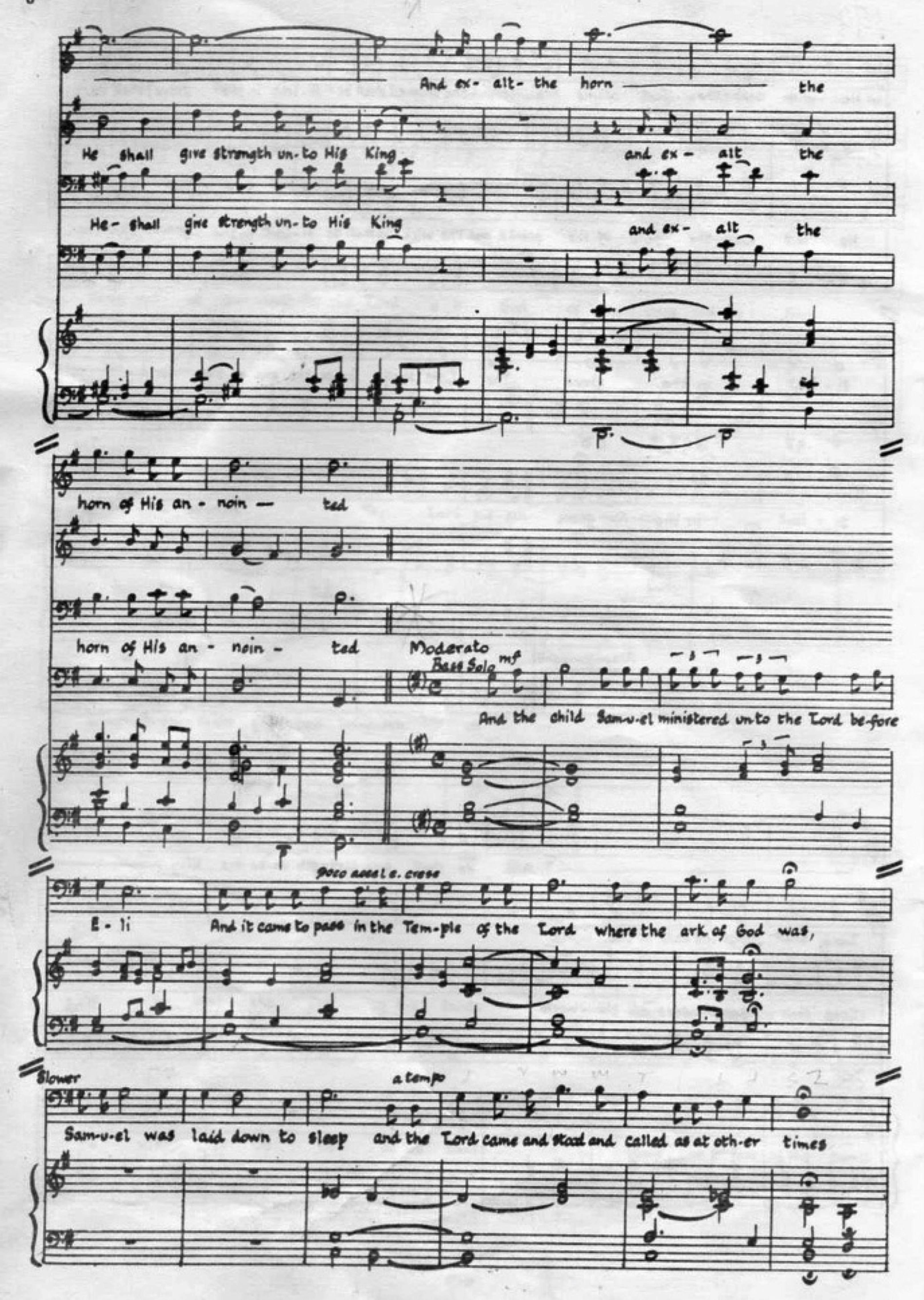
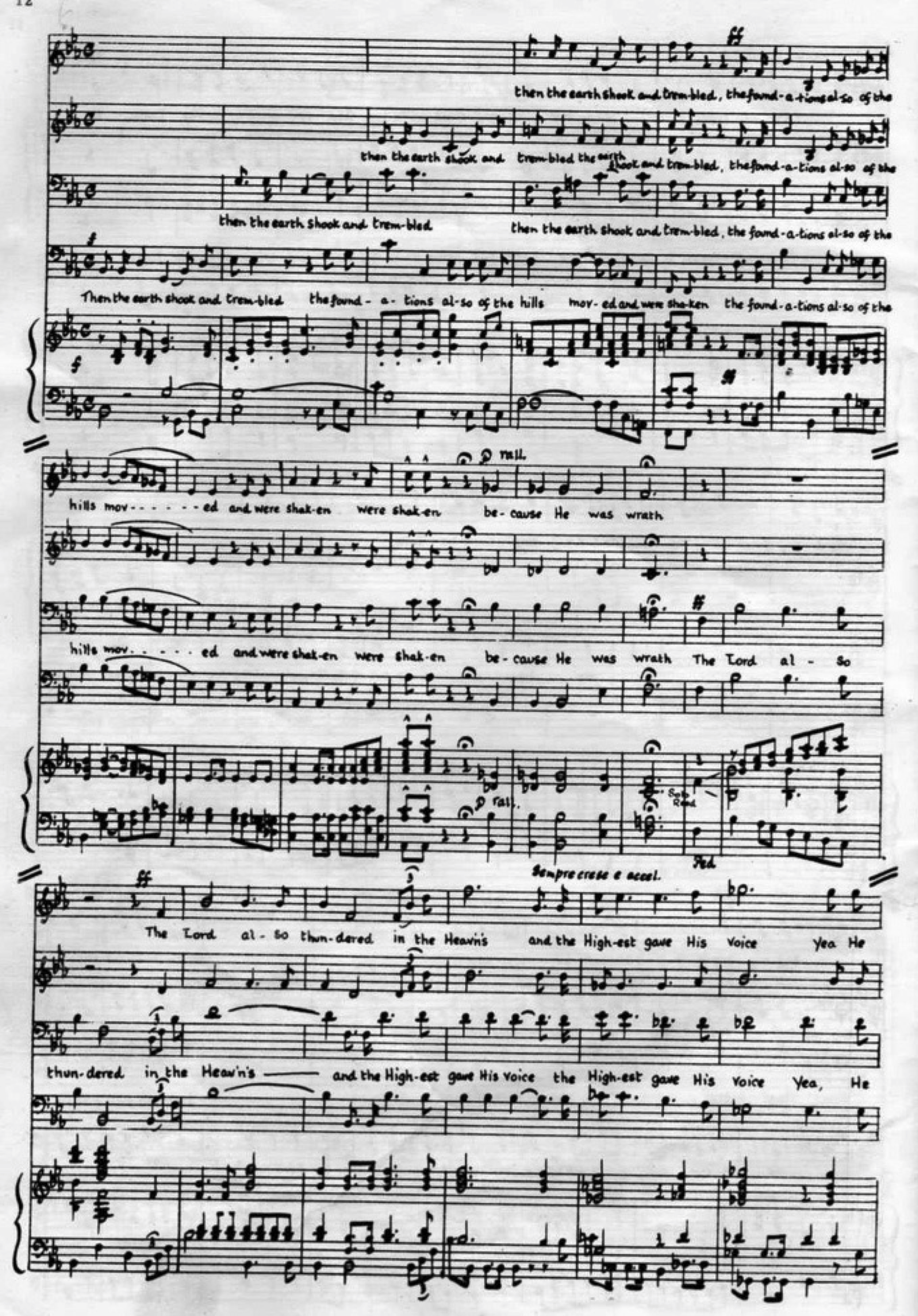
Part 2 of the cantata, "The Ministry of Samuel," opens in D major with the narrator, this time a tenor, who describes how Samuel is now fully established as the prophet of the Lord. This is followed by a short chorus in unison with accompaniment, which recounts that the Israelites went to Samuel and asked him to pray to the Lord to destroy the Philistines. In response, the audience learns that the Lord thundered on the Philistines and defeated them for the Israelites in a battle song adorned with accidentals that centers in C major. Following is a fairly lengthy chorus in E-flat major (see Example 3), presented in homophonic and imitative textures, celebrating the victory over the Philistines. The narrator returns to tell how Samuel judged the Israelites throughout his life-time. The second part of the cantata closes with a men's chorus in monophony, in which the people went to Samuel and asked him to provide them with a king.

Part three is entitled "Samuel Crowns the First King of Israel." This final part of the cantata begins with a trumpet fanfare from the organ, symbolizing royalty (see Example 4). A bass solo narrates how Saul was chosen by God from the house of Kish. The chorus enters with, "God, even thy God hath anointed thee...," modulating to F major to prepare the bass solo who recounts how God selected Saul as the chosen one. A unison chorale in G minor is then introduced first with accompaniment, then in parts, a cappella, and finally SATB with accompaniment, "Such trust have we thro’ Christ to Godward." The bass narrator returns in an adagio section, still in G minor, and describes how Samuel anointed Saul as king over Israel. A vibrant chorus begins forte in D major and celebrates the anointing of the new king, "Give thy king judgment O God," ending in fortissimo with full organ.
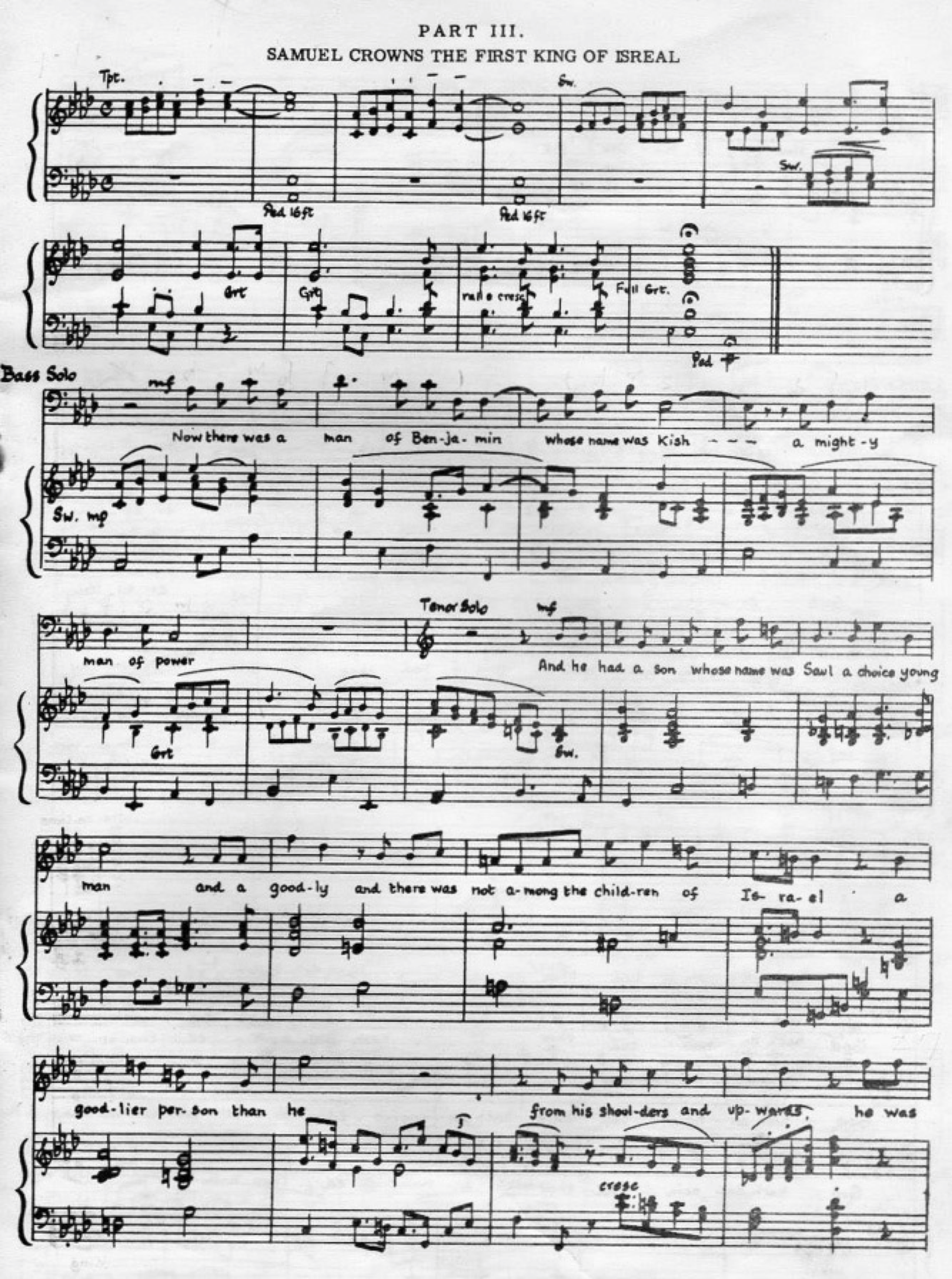
From there, a chorus of men in two- and three-part harmony recounts how Saul joined the company of prophets, how the Spirit of the Lord came upon him, and how he prophesied among them, all beginning in D major and closing in A major. The amusement of the people when they saw Saul among the company of prophets with the popular phrase, "Is Saul also among the prophets?" is set in fugal style; the subject is first presented by the alto, answered by the tenor, the bass, and finally in the high register of the soprano. To create the agitation, trepidation, and anxiety, in the minds of the people, Phillips calls for a con moto in this chorus, which begins in A major and ends in F minor.

A short organ interlude shifts the tonality to C major, for an unaccompanied quartet movement, "Thou hast redeemed us to God by thy blood out of every kindred and tongue and people and nation." The quartet tonicizes G and D major, but finally finishes back in C major. A bass recitative then narrates Samuel's description of Saul to Israel that there is none like him among all the people. The people respond in a chorus, "And all the people shouted, God save the King," which is immediately followed by the Nigerian National Anthem.
The final chorus, "Blessed be the Lord God," is set in C major with fiery organ accompaniment. As would be expected, it is the lengthiest of all the choruses in the work, but it still only lasts 81 measures. It begins in homophony, but changes to fugal texture on the phrase, "And blessed be the name of his majesty forever and all the earth shall be filled with his majesty, Amen." The chorus ends triumphantly on two amens—first on a submediant chord, and on the last cadence, the plagal. Over the movement, the chorus tonicizes several keys such as G, a minor, F, and A-flat major. It is loud throughout and ends with a jubilant fortissimo.
Conclusion
Ekundayo Phillips's works exemplify the combination of traditional Yoruba source materials inherent in the Nigerian roots with contemporary European musical style, creating intercultural music. Elements such as the tetratonic, pentatonic, and hexatonic scales, word-music relationship, call-and-response technique, monophonic texture, and indigenous polyphonic combinations of parallel intervals, are central to Phillips's musical language. Many of the compositional theories observed in Phillips's music are derived from his book, Yoruba Music: Fusion of Speech and Music. He makes the most of his research on the creative procedures of Nigerian traditional music in his compositions, and making church music more appealing to local congregations in southwest Nigeria.
Furthermore, Phillips's compositions certainly fall within the purview of intercultural ethnomusicology, depicting the commixture of Western musical elements with indigenous Nigerian musical resources. Phillips's compositions represent the first attempts by native Nigerian composers in the experimental synthesis of diverse musical idioms in creating a truly hybrid composition, an amalgamation of Nigerian indigenous music with European musical elements. Interculturalism manifests in five major planes in Phillips's music: the use of the Western diatonic scale with African pitch schemes such as the tetratonic, pentatonic, and hexatonic scales; the utilization of English and Yoruba texts; the use of organ, piano, and Nigerian traditional instruments; the employment of European formal structures such as fugue, ternary, aria, through-composed and strophic forms; and the inclusion of improvisatory skill as observed in the instrumental interludes and unwritten organ solos and accompaniments in his compositions.
––––––––––––––––––––––––
Selected Bibliography
Afolabi Alaja-Browne. "A History of Intercultural Art Music in Nigeria", in Intercultural Music 1, ed. Akin Euba and Cynthia Tse Kimberlin, Bayreuth: Eckhard Breitinger, 1995: 80.
Thomas Ekundayo Phillips. Sacred Choral Works: English and Yoruba. Lagos: Babafemi Ogundipe Enterprises, 1999.
Thomas Ekundayo Phillips. Yoruba Music: Fusion of Speech and Music. Johannesburg: African Music Society, 1953.
Godwin Sadoh. The Centenary of the Cathedral Church of Christ Choir, Lagos. Columbus, Ohio: GSS Publications, 2018.
Godwin Sadoh. Thomas Ekundayo Phillips: The Doyen of Nigerian Church Music. Bloomington, Indiana: iUniverse Publishing, 2009.
––––––––––––––––––––––––
The views and opinions expressed in this article are those of the author, and do not necessarily reflect the position of Vox Humana.